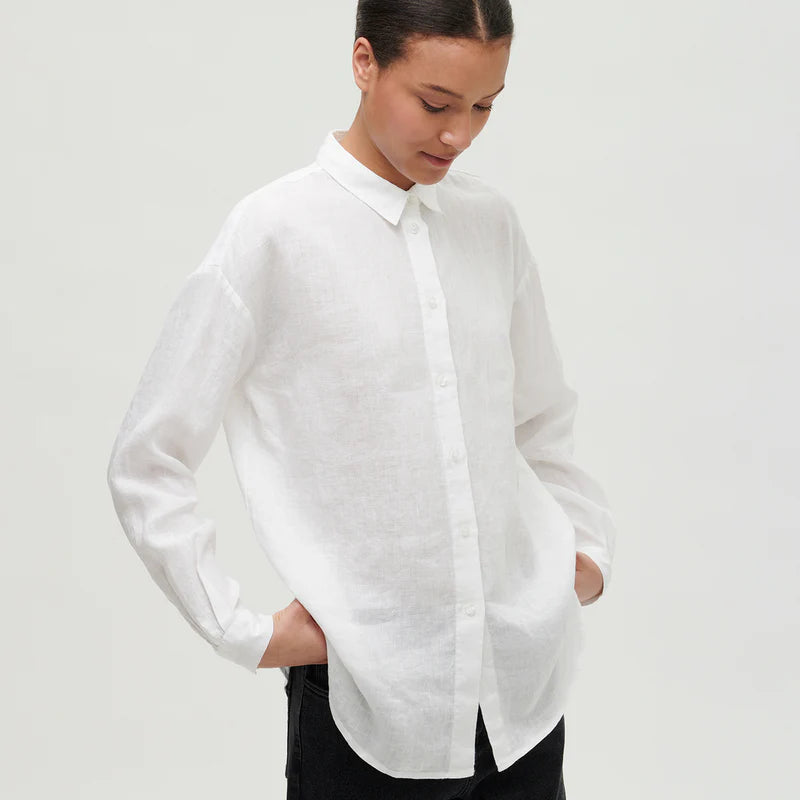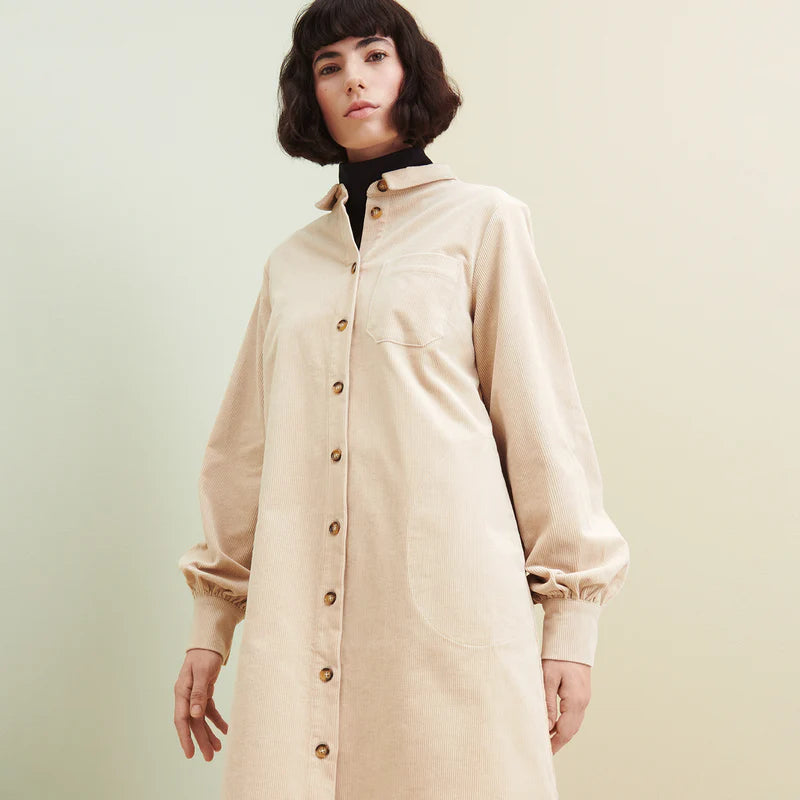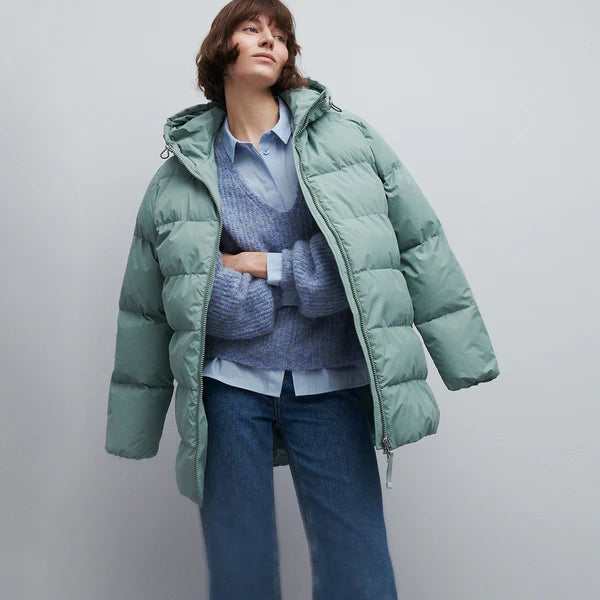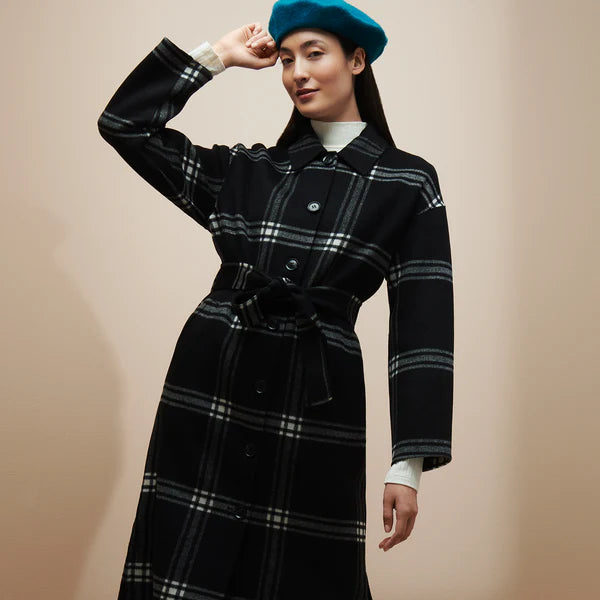Product care instructions
Nanso products are designed to endure wear and bring joy for years to come. By following the proper care instructions, you can enjoy your product for as long as possible while also doing good for the environment. Each of our products comes with a care label that includes general care guidelines, including the recommended washing temperature.

General washing guidelines
To ensure a long lifespan for your garment, it's best to always wash it at the recommended temperature. Each of our products includes a care label where you can easily check the suggested washing instructions with temperature details. Sometimes we wash clothes that are almost clean, simply to make them feel fresh. Instead of frequent washing, try airing out your clothes in fresh outdoor air or hanging them in a steamy bathroom. Often, a simple airing is enough to refresh the garment.
Material care instructions
Important features of Nanso products are comfort and ease of care. We always choose the most suitable material for the purpose, ensuring we design high-quality, functional, beautiful, and timeless products.

Jersey fabric
As a general guideline, we recommend washing jersey items inside out and using detergent that does not contain bleach. For printed products, soaking and washing at higher temperatures are not recommended, as these may cause the colors to bleed onto lighter areas of the product. The products should be washed in as loose a water flow as possible to maintain even colors. For items containing elastane, fabric softeners should not be used, as they can weaken the elastane fibers.
Some jersey products can be tumble dried carefully. However, tumble drying consumes a lot of energy and wears out the surface of the product. Air drying on a clothesline or rack is a better option for both the product and the environment.

Elastane
For products containing a high amount of elastane, the use of fabric softener is not recommended, as it weakens the elastane fibers. However, if the fabric contains only a small percentage of elastane and the product feels static, fabric softener can be used cautiously.

Wool
For wool knitwear, airing it in fresh outdoor air is often enough. However, if the product needs washing, always follow the care instructions. Even one wash in water that is too hot can shrink the wool sweater, making it unusable, or cause pilling on its surface.
Knitwear that requires hand washing should be gently washed in lukewarm water with a mild detergent, ensuring the detergent is fully dissolved before immersing the garment. Do not rub too much to avoid felting. After washing, rinse the knitwear several times in lukewarm water, gently reshape it to its original dimensions, and dry it flat at room temperature.

Linen
Turn linen garments inside out before washing and choose a liquid detergent.
Wash the garment with similarly colored items, and fill the washing machine only halfway. Washing linen in loose water helps avoid excessive wrinkling. Select a gentle spin cycle and a wash temperature of 40°C. Fabric softener is not recommended, as it may reduce the fibers' absorbency.
After washing, immediately reshape the garment to its original dimensions and dry it flat. Linen generally does not require ironing, as wrinkles are part of its charm. However, if needed, you can iron linen garments at a low temperature (two dots). It is best to iron the garment inside out and preferably when it is slightly damp. If necessary, you can dampen the fabric with a spray bottle. Linen garments should be stored rolled up to prevent wrinkles. Like many other fabrics, linen fades in the sun, so it’s best to store linen items in a cupboard, away from sunlight.
Linen sheets should be washed separately from other laundry. It’s a good idea to iron or press linen sheets while they are still damp. Regular post-wash finishing helps to tighten the fabric, making it more dirt-repellent, and reduces the shedding of excess fibers that is typical of linen.

Modified fibers
For products containing viscose or other modified fibers, such as modal and lyocell, it is recommended to use a delicate wash cycle and gentle washing instructions.
Strong spinning is also not recommended. After washing, it’s important not to leave the product wet in the washing machine, but to immediately hang it up to dry. This helps prevent washing marks from forming on the product.
Viscose typically shrinks by 3-5% during the first wash. However, the product can be returned to its original dimensions by ironing it while it is still damp.

Velvet
Instead of frequent washing, velvet should be refreshed by airing it out. If you do wish to wash a velvet garment, always check its care instructions before washing. Turn the velvet garment inside out before washing to preserve its surface.
To remove wrinkles from velvet, the best method is to gently steam it. Never iron velvet with an iron, as the heat and pressure from the iron can damage the delicate fibers of the velvet.

Knitwear
Nanso knitwear is designed to delight for a long time, both in quality and style. However, proper garment care plays a significant role in extending the lifespan of your clothes.
Maintain your jacket for winters to come.

Quilted jackets
Always check the care instructions on the label of your quilted jacket before washing and ironing. You can easily remove loose dirt from the jacket’s surface with a garment brush, and small stains can be cleaned by gently wiping with a damp cloth. Our high-quality quilted jackets can be machine washed at 30°C using a delicate wash program. Make sure to close the buttons and snaps and turn the jacket inside out before washing. Wash the jacket in spacious water, either on its own or with similar colors. Do not use fabric softener or bleach during washing. Never tumble dry the jacket.
You can also iron your quilted jacket on the lowest heat setting (one dot). Iron the jacket on the inside.

Padded jackets
Always check the care instructions on the product’s label. Nanso’s padded jackets can be washed at 30°C. Close the zippers before washing, turn the jacket inside out, and make sure the jacket fits easily in the drum of the washing machine. It’s best to wash the jacket loosely in the machine, preferably on its own. If you choose to wash other textiles at the same time, make sure to select only similar colors. Use a mild, bleach-free detergent and avoid using fabric softener.
After washing, fluff the padding and carefully shape the jacket back to its original size. Dry the jacket in a well-ventilated area, such as hanging it on a wide clothes hanger. Our high-quality padded jackets can also be ironed and tumble dried on the lowest heat setting (one dot).

Wool coats
To maintain the structured shoulder line, it’s best to use a wide hanger when storing your wool coat. Since wool has a natural ability to clean itself, it’s a good idea to refresh the coat between wears by airing it out. Dust and dirt can be easily removed with a clothes brush, and wrinkles can be eliminated gently with a garment steamer.
Never iron a wool coat, as the heat and pressure from the iron can damage the wool fibers. Avoid using a lint roller for cleaning, as the adhesive from the roller can stick to the wool fibers. Stains should be removed with professional dry cleaning.

Simple maintenance
A well-maintained garment brings joy for a long time. We want your Nanso clothing to remain beautiful wear after wear. Extending the lifespan of your garments has a significant environmental impact: emissions can be reduced by up to 44% if a garment is used twice as long, instead of the average 160 wears. Therefore, an important environmental action is to keep your clothes in use for as long as possible.


